Chicken Inasal is easy to make yet delivers tons of flavor. Marinated in vinegar, calamansi juice, lemongrass, and achiote oil and grilled to juicy perfection, this Filipino chicken barbecue is a guaranteed crowd-pleaser!
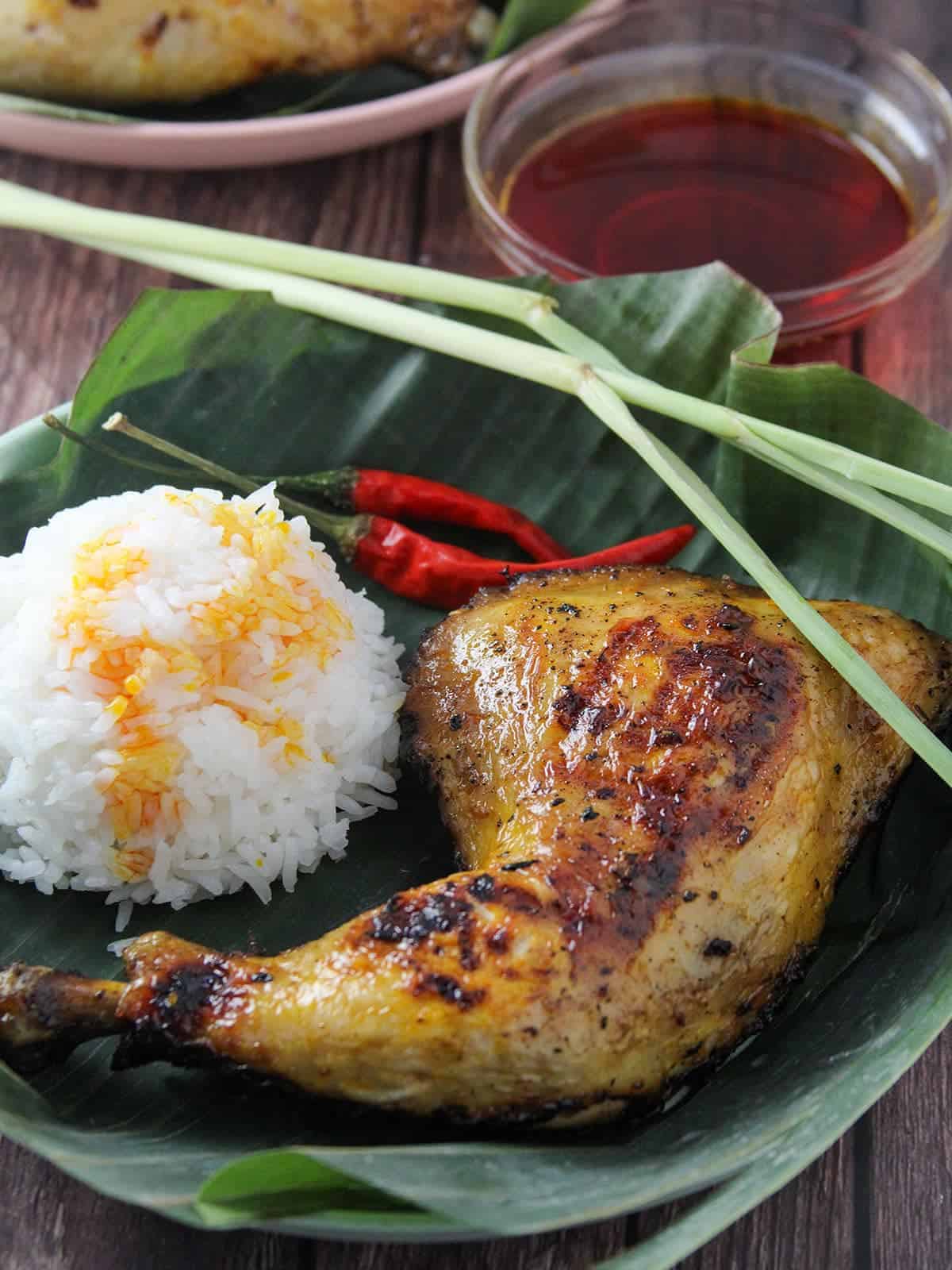
I spent the early part of this year in the Philippines, and a good number of my meals in those months were Mang Inasal pecho with unli rice. One of my aunts introduced me to this popular Bacolod specialty, and I'm forever hooked to the nuot sarap inihaw na manok!
I am now back in Texas with no restaurant branch for thousands of miles to feed my inasal cravings. Sob.
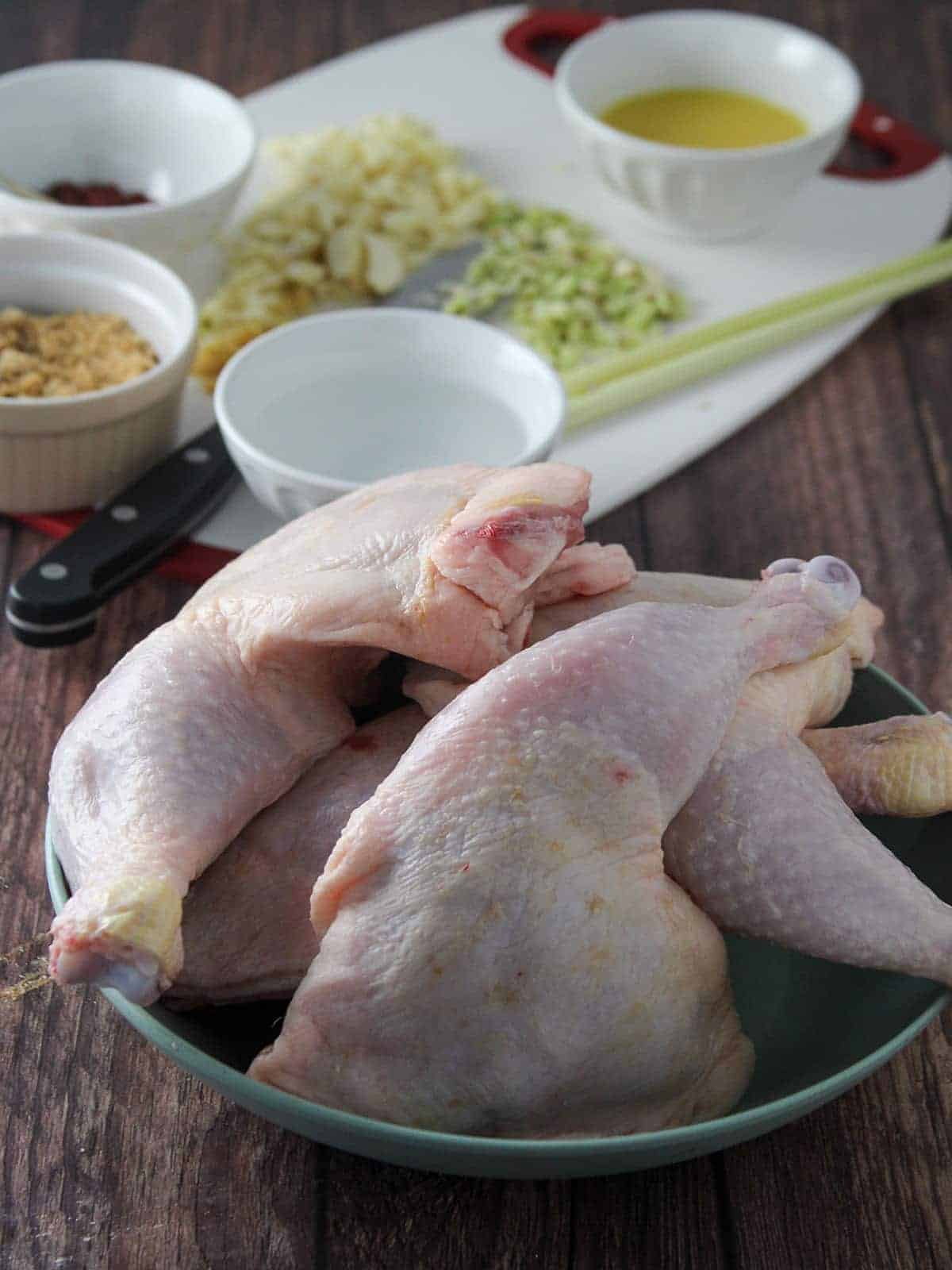
If you're like me and hankering for some juicy, flavor-packed Filipino BBQ, try this recipe. It's easy and more budget-friendly to make at home, yet just as tasty and delicious!
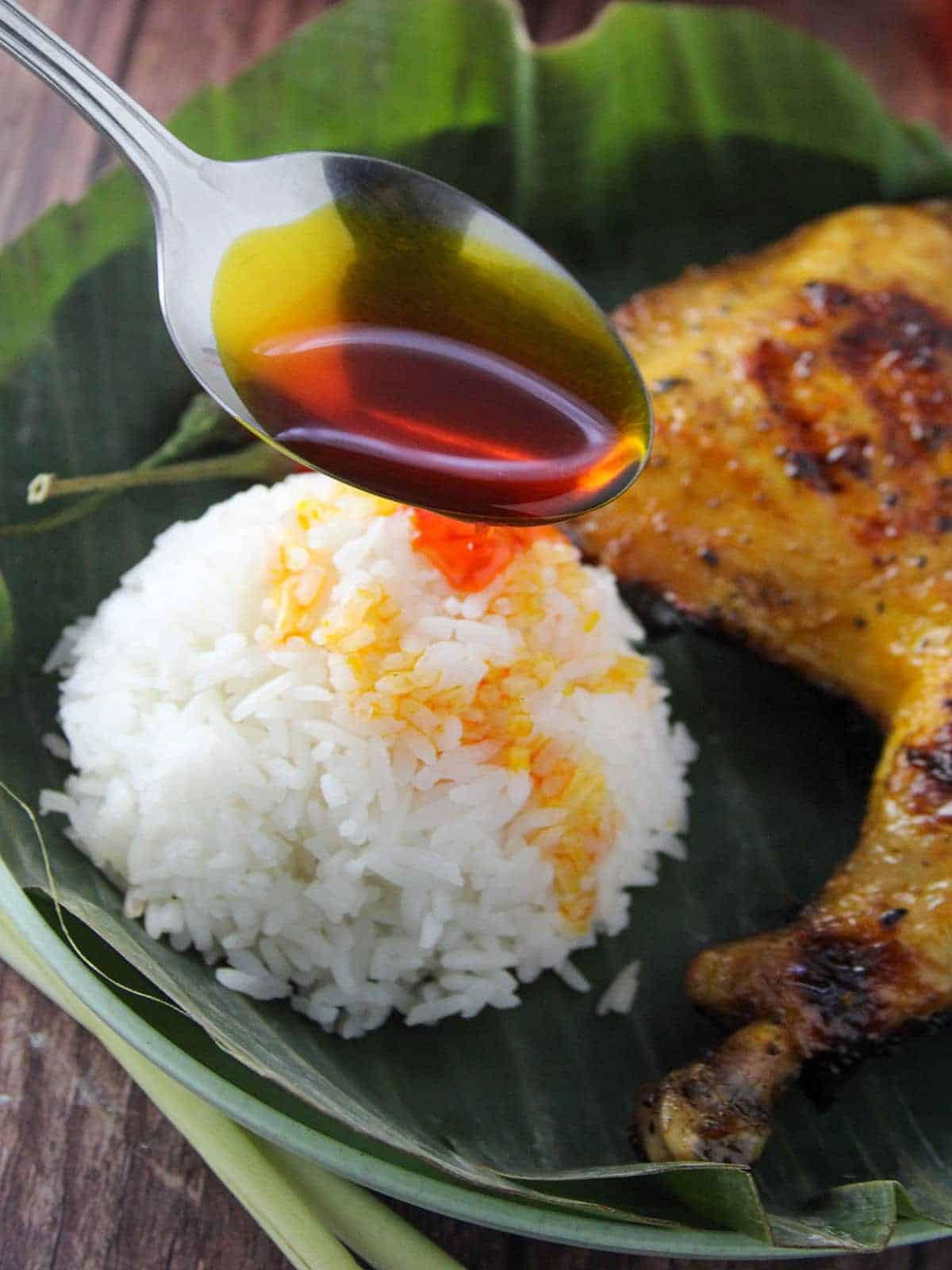
Chicken Inasal is a popular grilled dish from the Western Visayas region. Its distinctive flavor and color are from a marinade made of vinegar, calamansi, lemongrass, garlic, ginger, brown sugar, and atsuete oil. Other versions of the recipe also include Sprite or 7-up to add flavor and act as a tenderizer.
The chicken parts are usually skewered in bamboo and then grilled over hot coals to juicy perfection while basting with oil.
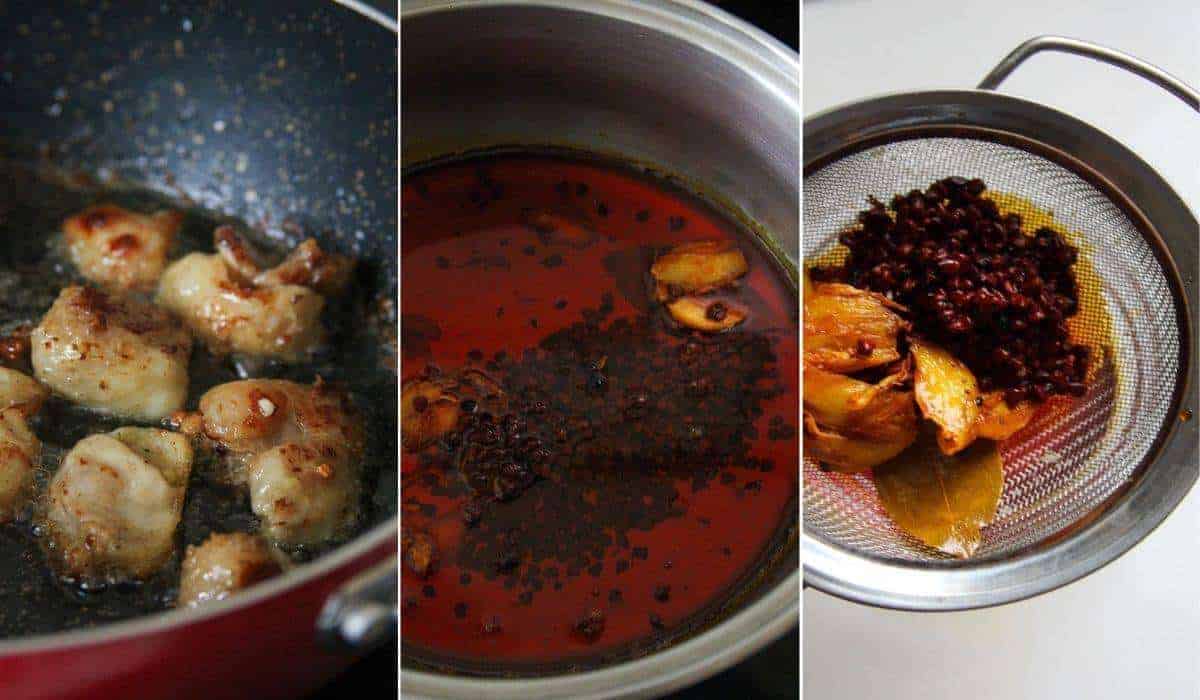
How to make chicken oil
The orange-colored oil is a major component in the flavor profile of this Visayan dish. I use chicken skin and fat but feel free to swap with vegetable oil to cut down on the cholesterol.
- Place chicken skin, bottoms, and fat in a wide pan over medium heat. Cook, stirring as needed, until they begin to crisp and render fat.
- Using a slotted spoon, remove the skins from the oil.
- Add atsuete seeds, crushed garlic, and bay leaf. Cook for a few minutes until the oil is evenly colored.
- Remove from heat and steep for about one hour to draw out more flavor and color. Strain using a fine-mesh sieve and discard aromatics.
- If using atsuete powder, stir about one tablespoon until well-dispersed, and strain using a fine-mesh sieve.
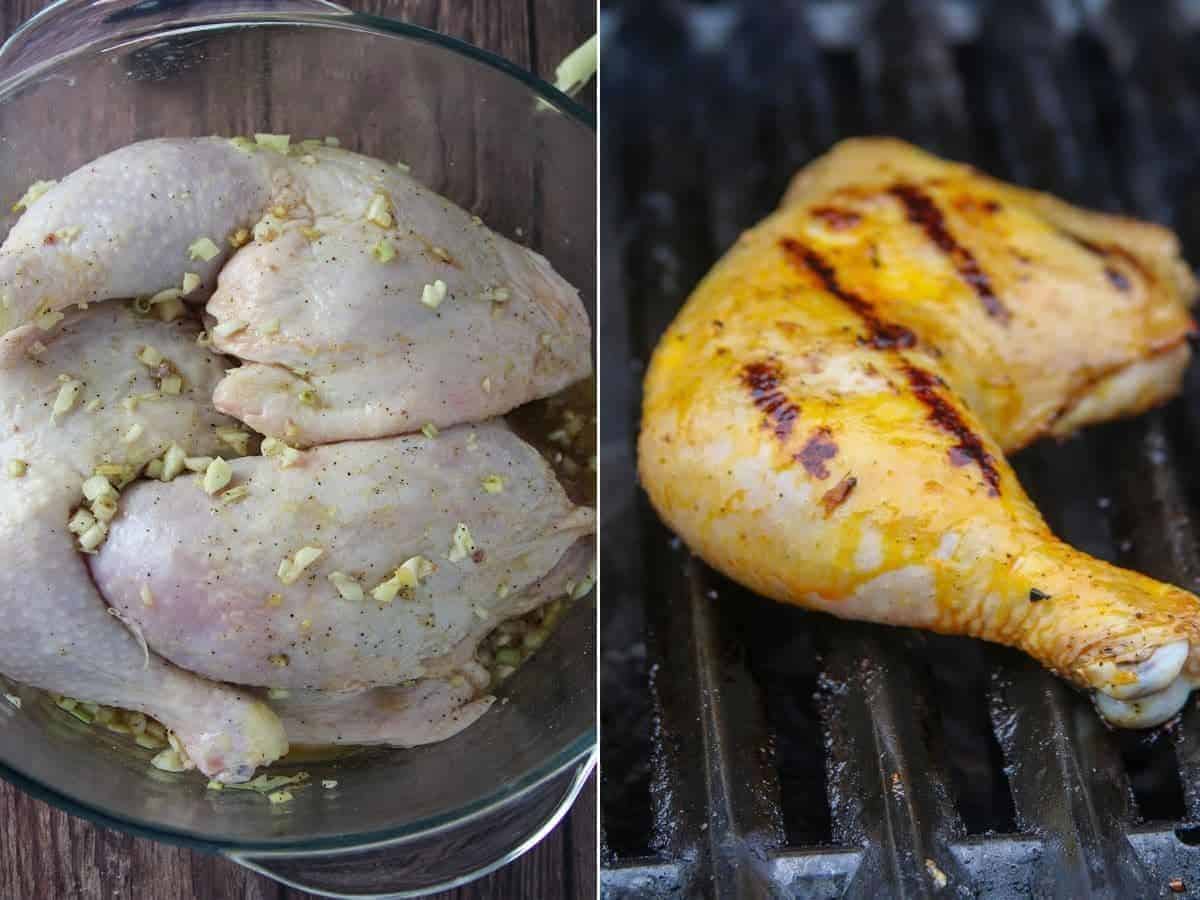
Cooking tips
- Depending on the size, cut the whole chicken in quarters (two breasts and two leg quarters). For easier handling, skewer the chicken pieces with a bamboo stick.
- Use a non-reactive bowl or resealable bags to marinate the chicken.
- Marinate for at least two hours up or overnight for the best results. Do not keep the chicken in the marinade for more than 8 hours lest the vinegar and citrus juice acids denature the proteins and turn the meat mushy.
- For food safety, divide the atsuete oil and use half for basting and the other half for serving.
- To check for doneness, insert a thermometer in the thickest part of the chicken without touching the bone. 165 F is the safe internal temperature for both dark and white meat.
The secret to juicy meat
Let the grilled chicken rest for three to five minutes before cutting to redistribute the juices!
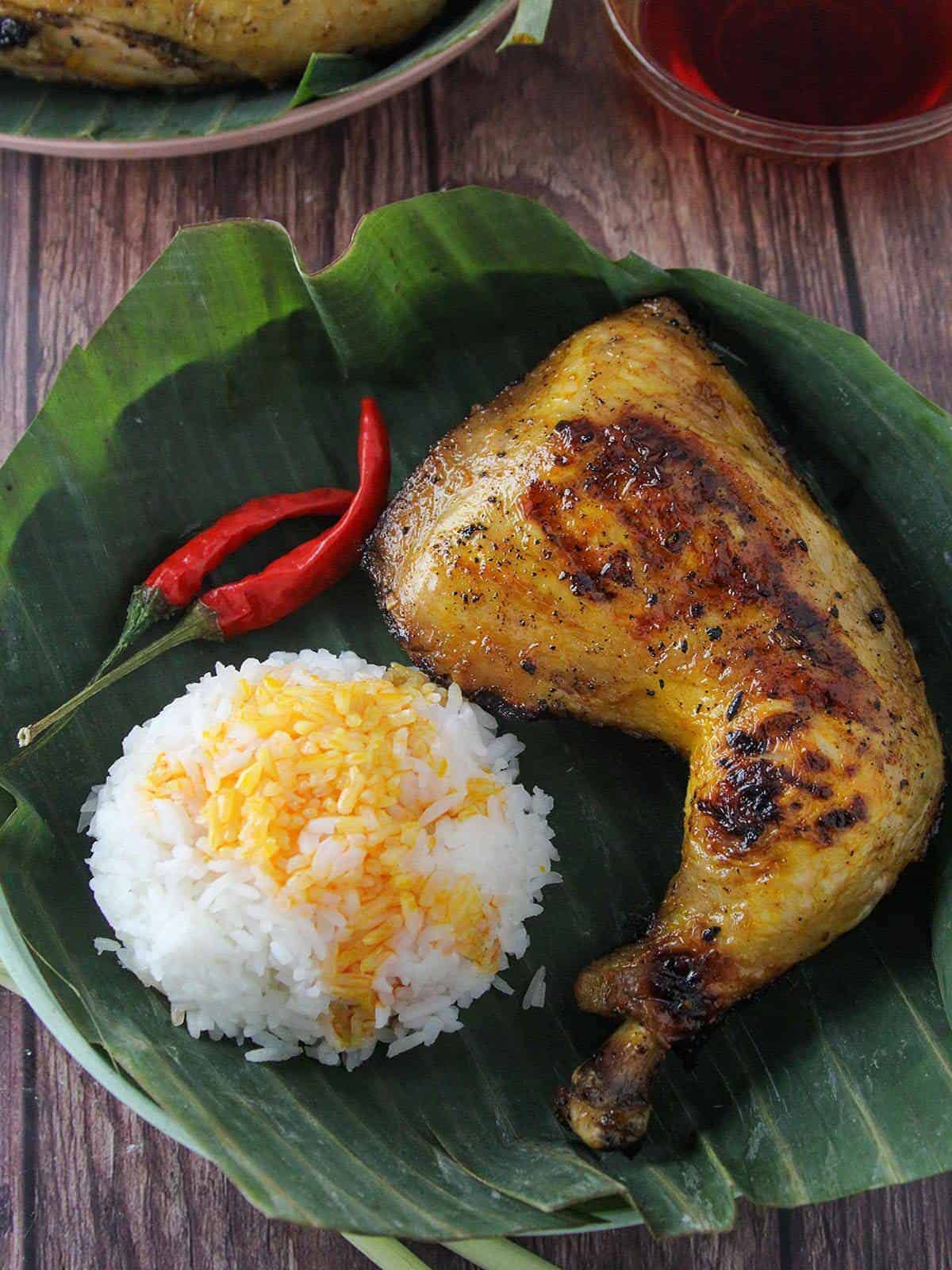
Serving suggestions
Chicken inasal is commonly served as a main dish for lunch or dinner with steamed rice and condiments such as chicken/atsuete oil and calamansi-soy sauce mixture or sinamak (spiced palm vinegar).
How to store leftovers
- Transfer leftovers to a container with a tight-fitting lid and refrigerate for up to three days or freeze for up to 2 months.
- To reheat, wrap in aluminum foil and bake in a 350 F oven for 15 to 20 minutes until heated. Alternatively, arrange chicken pieces on a microwaveable plate, cover them with a damp paper towel, and microwave for about 2 to 3 minutes or until heated.
Ingredients
- 2 stalks lemongrass
- 1 head garlic, peeled and minced
- 1 thumb-size ginger, peeled and grated
- ½ cup palm vinegar
- ¼ cup calamansi juice
- ¼ cup brown sugar
- 1 ½ teaspoons salt
- ½ teaspoon pepper
- 2 (about 3 to 4 pounds each) whole chicken, quartered
For the Annatto Oil
- 1 pound chicken skins, bottoms, and/or fat
- ¼ cup annatto seeds
- 2 garlic cloves, peeled and pounded
- 1 bay leaf
Instructions
- Peel and/or cut away the dark, fibrous parts of the lemongrass until you get to the white and light green portions. Using a knife, finely chop lemongrass.
- In a large bowl, combine vinegar, calamansi juice, garlic, ginger, lemongrass, sugar, salt, and pepper. Whisk until well-blended.
- Add chicken and cover bowl. Marinate in the refrigerator for at 2 to 4 hours.
- In a wide pan over medium heat, place chicken fat and cook, turning as needed, until crisp and renders oil. Using a slotted spoon, remove skin and bottoms.
- Lower heat and add annatto seeds, crushed garlic, and bay leaf. Cook for about 1 to 2 minutes, turning as needed to prevent seeds from burning.
- Remove the pan from the heat and allow the oil to steep for about 1 hour or until oil is infused with deep orange color. Using a fine-mesh sieve, strain oil. Discard aromatics and set aside oil.
- Lightly grease grill grates and heat over hot coals.
- Drain chicken from marinade and scrape off any stray aromatics. Arrange chicken in a single layer over hot grates with skin side up.
- Grill chicken, turning once or twice and basting regularly with the half of the chicken oil, for about 30 to 40 minutes or until a thermometer inserted in the thickest part of chicken registers 160 F.
- Remove from heat, cover, and allow to rest for about 3 to 5 minutes. Serve hot with the remaining chicken oil and steamed rice.
Notes
- Use a non-reactive bowl or resealable bags to marinate the chicken.
- Marinate for at least two hours up or overnight for the best results. Do not keep the chicken in the marinade for more than 8 hours lest the vinegar and citrus juice acids denature the proteins and turn the meat mushy.
- For food safety, divide the atsuete oil and use half for basting and the other half for serving.
- To check for doneness, insert a thermometer in the thickest part of the chicken without touching the bone. 165 F is the safe internal temperature for both dark and white meat.
Video

Nutrition Information
“This website provides approximate nutrition information for convenience and as a courtesy only. Nutrition data is gathered primarily from the USDA Food Composition Database, whenever available, or otherwise other online calculators.”

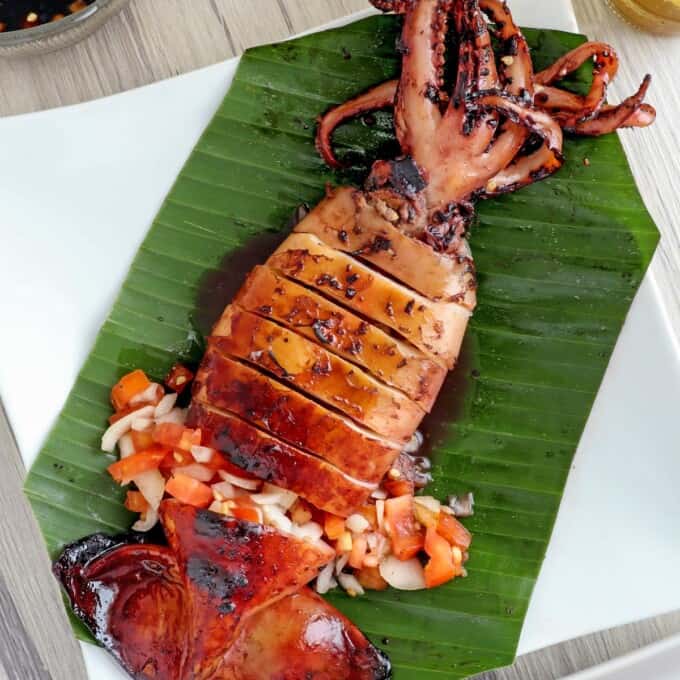
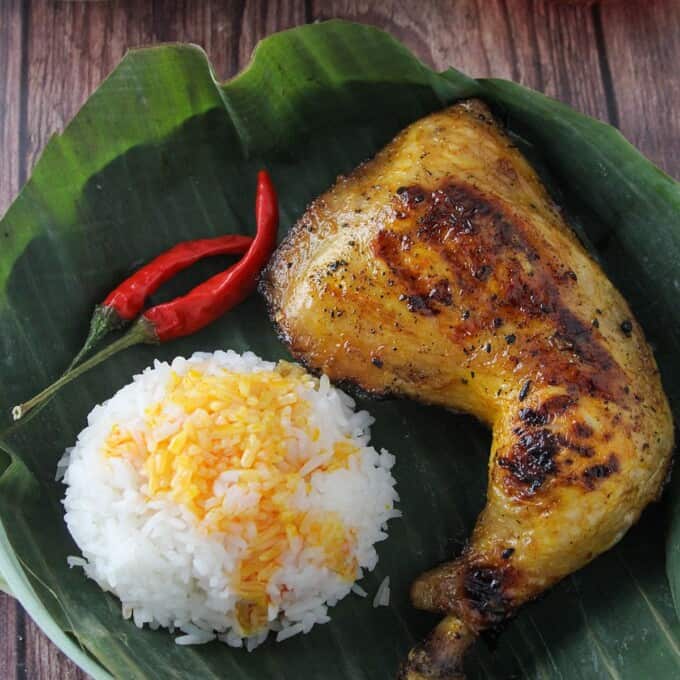
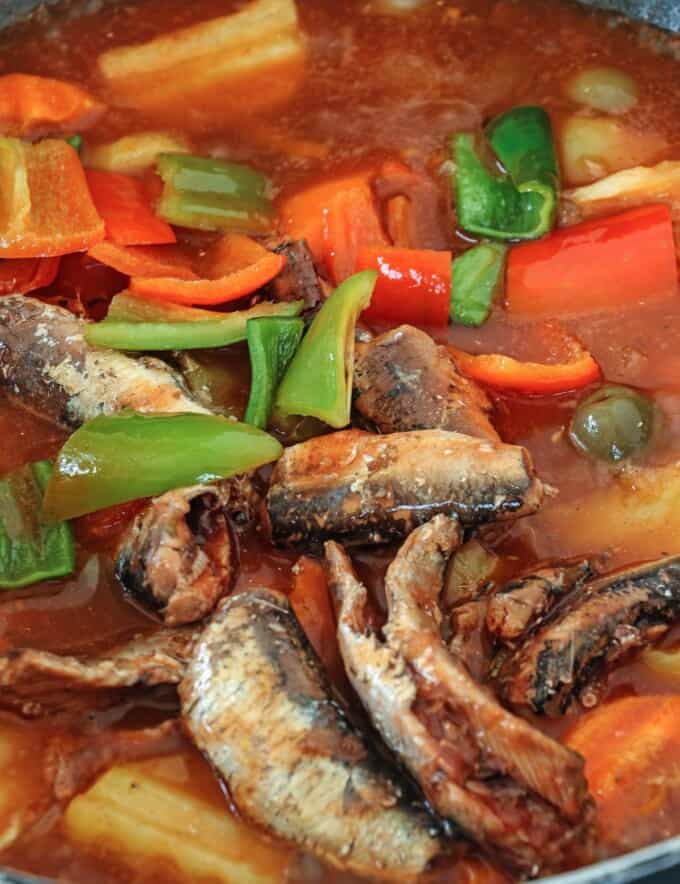
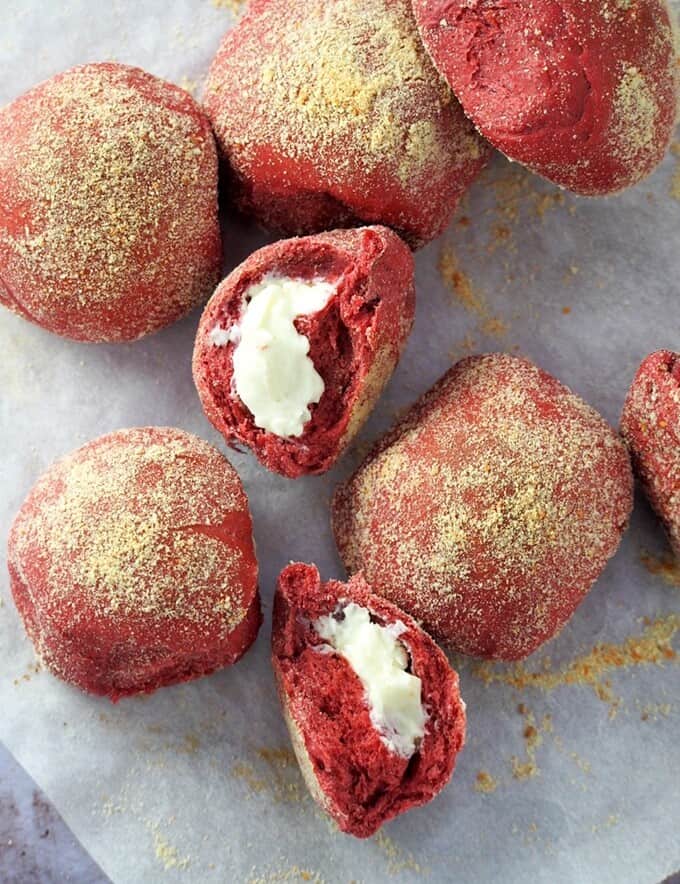
Shay says
What is the substitute for palm vinegar?
Lalaine Manalo says
You can use distilled vinegar or apple cider vinegar 🙂
Lynne B says
Love your recipe! Thank you! Of all the ones That came up in the search, I went with yours. Making it again tonight but with the spicy vinegar. Mom may not be able to deal but hubby will love it.